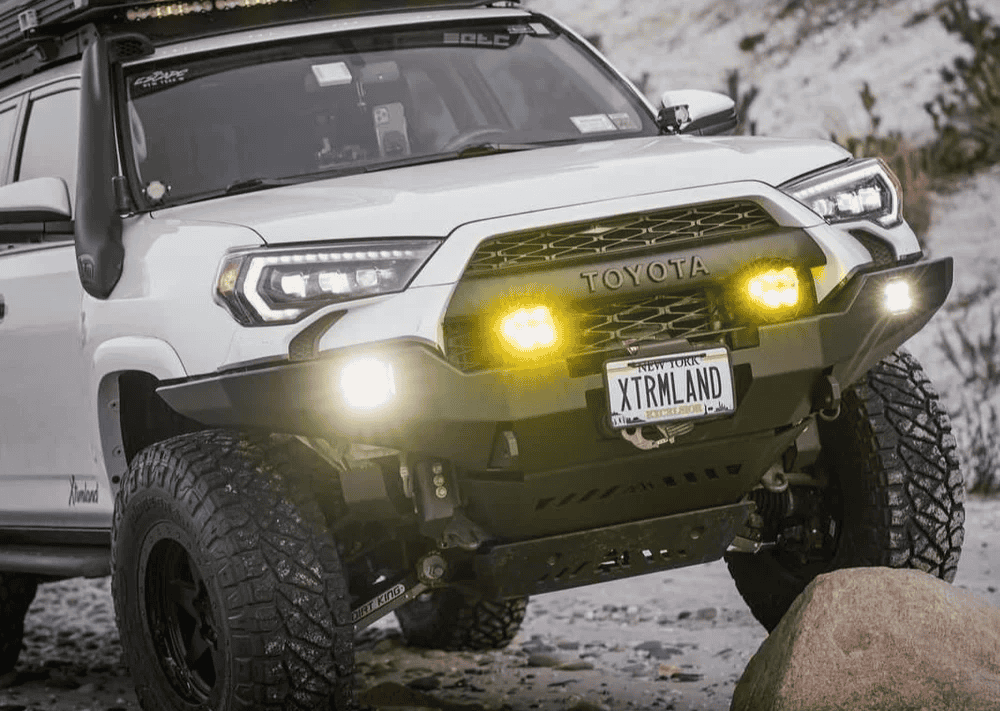Overland Vehicles

Custom panel integration brings order to the controls and displays that run a mobile environment. Instead of scattered switches and dangling accessories, a well designed panel unifies power distribution, lighting, water systems, climate devices, and navigation into a clean, intuitive interface. It should feel natural at a glance, reachable without strain, and readable in bright daylight or at night. In a moving vehicle, integration is not just cosmetic; it is about safety, serviceability, and noise free operation.
Successful integration starts with a complete inventory of what the driver and occupants need to see and touch. Map out primary, secondary, and occasional functions, then assign ideal locations and tactile feedback. Consider glove friendly toggles, positive locking circuit breakers, dimmable backlighting, and labels that remain legible after years of sun and dust. The goal is clarity under stress so critical functions are never buried or confusing.
Custom panels live in harsh conditions. They face vibration, temperature swings, and occasional moisture. That reality shapes every decision from the choice of materials to the way wires are dressed and strain relieved behind the faceplate. A panel that looks great on a bench must still be quiet, cool, and rattle free on washboard roads.
Sightlines and reach dictate layout. Primary driving functions should sit near eye level with minimal hand travel from the wheel, while living system switches can cluster near the galley or the bed. Use consistent spacing and group controls by system so muscle memory takes over. For night driving, prioritize low glare indicators, adjustable brightness, and contrasting legends. If touchscreens are included, pair them with a few hard keys for critical operations like lights or defroster, ensuring control even with wet gloves or a bumpy trail.
Behind the face sits the real work. Build around a clear power architecture with proper fusing or breakers sized to load and wire gauge, short wire runs, and common grounds to reduce noise. Multiplexed switching or solid state relays can lower current at the panel and cut bulk in the harness. Respect manufacturer networks such as CAN bus; do not splice into data wiring, use approved interfaces where applicable. Allow slack and service loops, secure with abrasion resistant loom, and isolate every passthrough with grommets. Mark every conductor with heat shrink labels so diagnostics are fast and accurate years later.
Material selection affects strength, weight, and how the panel ages. Powder coated aluminum is a popular choice for light weight, corrosion resistance, and precise CNC cutouts. Stainless adds stiffness where heavy components mount. In living spaces, laminated birch plywood or phenolic faces can match cabinetry while delivering durable cut edges. For marine grade durability in wet zones, consider UV stable plastics like HDPE or acrylic with sealed backs. Finishes matter too; light texture hides fingerprints, matte reduces glare, and anodized edges resist wear at frequent touch points.
Thermal management deserves attention. High output inverters, DC DC chargers, and distribution blocks create heat that should not bake behind a closed panel. Provide ventilation paths, standoff spacing, or discreet mesh, and avoid stacking heat sources. Where panels mount to metal, add isolators to limit drumming and galvanic corrosion. Use rivet nuts or captive nuts so the face can be removed without access to the backside, then add service windows or hinged sections to reach common fuses quickly.
Testing is part of the design. Cycle every control with the engine running and multiple loads active to check voltage drop and noise. Drive rough roads to hunt buzzes and rattles, then add foam tape, thread locker, or edge trim where needed. Validate labels in sunlight and at night, and confirm that anyone new to the rig can identify the right switch in seconds.
When these principles meet the realities of travel, the payoff is immediate. A thoughtful panel reduces cockpit clutter, speeds setup at camp, and cuts troubleshooting time if something acts up. For drivers who navigate long dirt roads, fewer distractions and reliable feedback make the journey calmer and safer. For families, clear labeling and consistent placement help everyone operate essential systems without guesswork.
If your vision involves serious travel and remote miles, explore Overland rigs to see how integrated controls support off grid power, lighting, and recovery equipment. When it is time to translate ideas into a build ready plan, a focused process aligns control layout, electrical diagrams, and materials. That is where a dedicated upfit shines, turning sketches into precise cuts, labeled harnesses, and durable finishes.
Looking for a deeper, tailored approach. Review our Custom overland upfit process to understand how panel planning ties into full vehicle electrical and interior design. You will see how ergonomics, labeling, and serviceability get baked in from the first design pass, not bolted on later.
Choosing the right partner matters. Learn what sets our team apart at Why choose OZK Customs. From precise fabrication to thoughtful handoff, the goal is a panel that works as good as it looks, on pavement and far beyond it.
Tell us what you need to control, where your hands naturally land, and how you travel. We will translate that into a clean, quiet, and serviceable panel that integrates with your rig’s electrical architecture and interior. Based in Fayetteville Arkansas, OZK Customs delivers refined panels within complete van and overland builds so your controls feel natural from day one. Share your goals and we will craft an integration that handles the miles without drama.
Ready for a panel that looks factory and works flawlessly on rough roads and long trips. Tell us how you travel and what you need to control, and OZK Customs will design and build a serviceable, quiet, and safe integration around your rig’s electrical architecture. Submit the form to start your design consult.
ADDRESS:
6159 E Huntsville Rd, Fayetteville, AR 72701
PHONE:
(479) 326-9200
EMAIL:
info@ozkvans.com